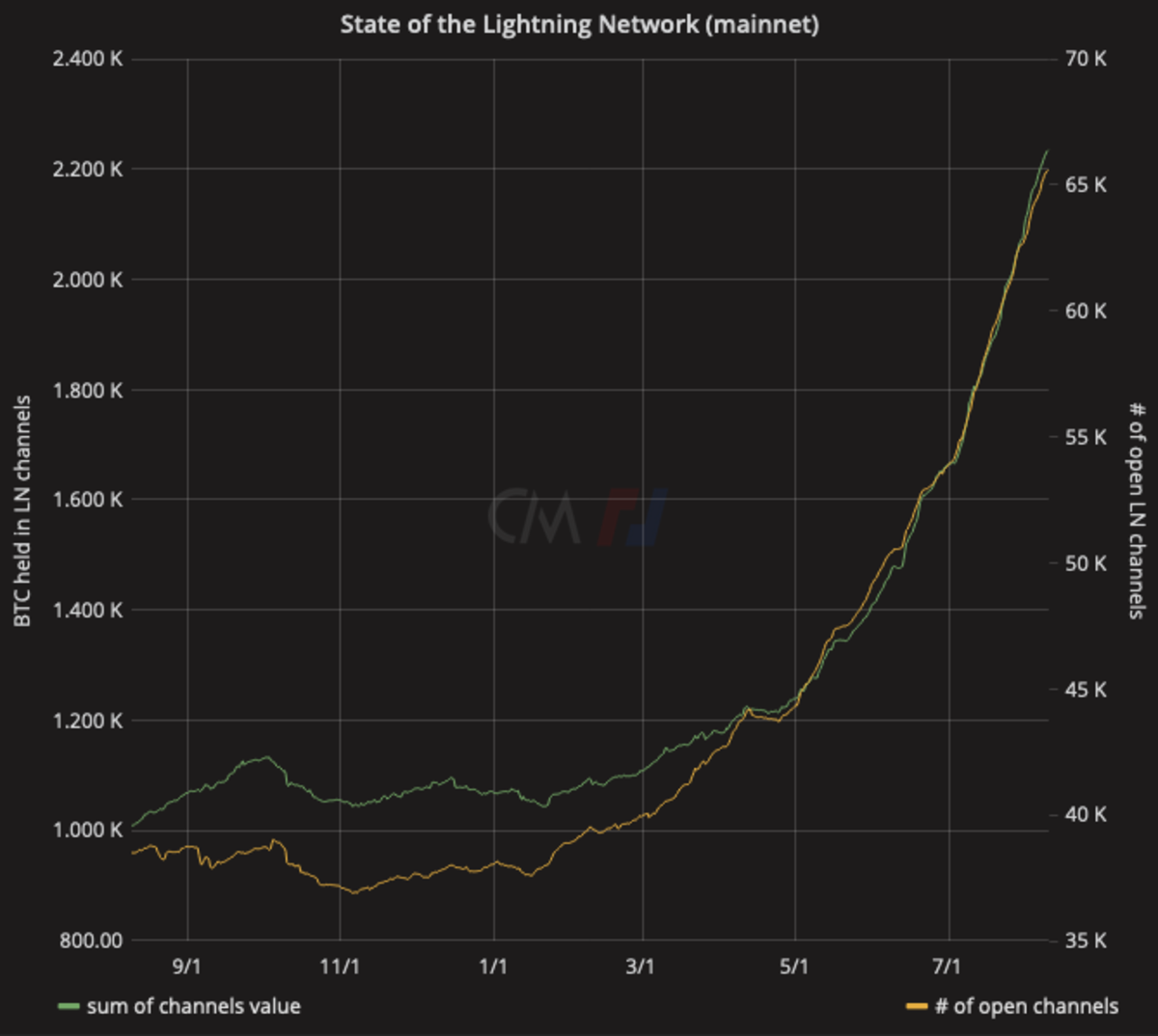The Lightning Network, a Layer 2 protocol for scaling the Bitcoin network with fast, cheap, and private transactions, now holds over 2,200 BTC in its channels. The scaling solution proposed in 2015 by Joseph Poon and Thaddeus Dryja has more than doubled its bitcoin capacity in one year, currently with over 65,000 open channels.

A one-year window of the state of the Lightning Network by Bitmex Research.
Lightning has been demonstrating stark growth this year. The network's capacity has seen a 46% increase in less than two months – in June, it was housing about 1,500 BTC.
Why The Bitcoin Lightning Network Exists
Lightning was designed to scale the Bitcoin network's base layer. Bitcoin relies on a distributed ledger, cryptography, a peer-to-peer network, a consensus protocol, and a hard-to-produce but easy-to-verify process to add entries to the blockchain to ensure openness, censorship-resistance, and trustlessness. Together, these characteristics solve the double-spend problem and set Bitcoin as the first and proper peer-to-peer electronic cash system – a distributed network that allows uncensorable payments to be made between distrusting parties without relying on any intermediaries.
However, that is quite costly to achieve, and the many nuances involved do not allow the base layer to be scaled. Blocks have to remain small, for instance, so that the cost of running a node remains low and, therefore, the network remains distributed. But if Bitcoin is to achieve its destiny and become the world's global currency and default value system, it needs to scale. That's where layered scaling comes in.
How Lightning Works
The Lightning Network is a Layer 2 protocol for Bitcoin. It utilizes Bitcoin's base layer and protocol to abstract small transactions between users away from the Bitcoin blockchain. With smart contracts, Lightning can settle the final balance of those payments into the base layer while ensuring that all transactions abide by the rules of the protocol.
Therefore, only channel-opening or channel-closing transactions are recorded on the Bitcoin blockchain base layer. By not requiring the transaction fees or wait times that on-chain Bitcoin transactions typically do, Lightning enables its users to enjoy affordable, fast, and private payments.
Under the hood, the protocol creates a multisignature address, known in Lightning as a "payment channel," in which the two participating users each hold a private key. Both users can then share the funds in the address but prevents either one of them from acting maliciously to the detriment of the other. If one user makes a payment to the other, their respective balances in the payment channel are updated, indicating how much of the total channel funds each user will get upon channel closure.
Maturation Drives Adoption
Since the Lightning Network launched as a beta in March 2018, it has seen significant growth and increased adoption. As the network matures, more apps that leverage it are built, and the existing ones are improved. As a result, non-technical users can venture into Lightning with greater ease, further expanding its reach and propelling Bitcoin toward becoming an established medium of exchange.
This year, Lightning has been growing rapidly amidst increased Bitcoin adoption. In April, the network reached the 10,000 node mark, and one month later, the first-ever dual-funded mainnet Lightning channel was opened. In July, BlueWallet released its new mobile LDK implementation, Blockstream announced the Greenlight Lightning node service, and Breez welcomed Seetee as its latest investor.











